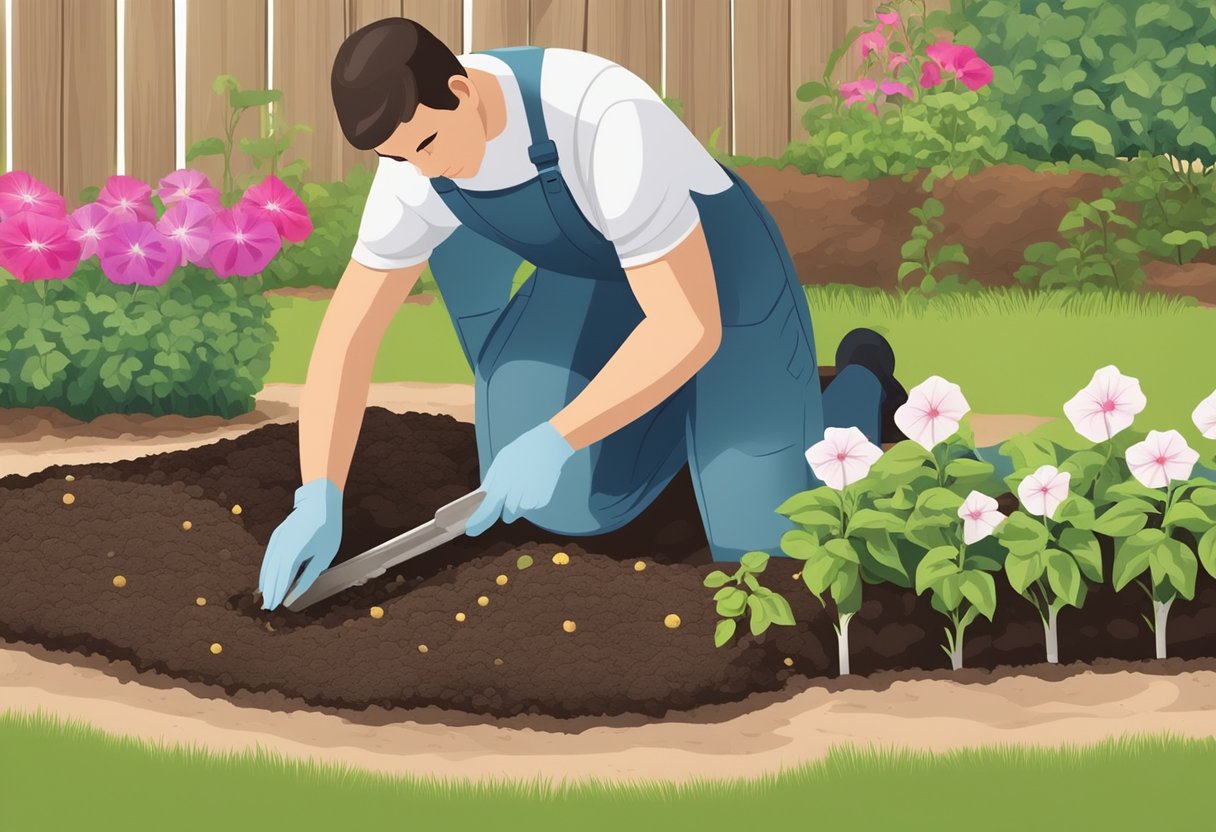Petunias are a vibrant and versatile flowering plant that can brighten up any garden. As a knowledgeable gardener, I find it crucial to time the planting of petunias perfectly to ensure they flourish. For successful growth, petunias require a good start, and that means planting them at the right time.

Plant young petunias outdoors after the last spring frost date in your area. This avoids the risk of frost damage to the tender plants, ensuring they have the best chance to grow and thrive.
In my experience, petunia seeds are tiny and require plenty of light to germinate. I start the seeds indoors about 10 weeks before the last frost date. Once they develop three true leaves, I know they are ready for transplanting outdoors. It’s essential to keep a close watch on weather predictions even after planting since a sudden late frost can necessitate protective measures to safeguard the young petunias.
JUMP TO TOPIC
Petunia Varieties and Selection
When I consider planting petunias, I focus on the diversity they offer. Petunias come in a wide range of varieties, each with its distinct characteristics. Here’s a quick rundown:
| Variety | Flower Size | Climate Preference | Color Range |
|---|---|---|---|
| Grandiflora | Large | Struggle in hot, humid climates | Pinks, Purples, Whites, and Patterns |
| Multiflora | Smaller, more numerous | Tolerant to wet conditions | Pinks, Purples, Whites, Yellows |
| Milliflora | Miniature | Varies | Pinks, Purples, Whites, Yellows |
For those seeking a hearty, resilient option, I suggest multiflora petunias. Their smaller blooms compensate with quantity, braving wetter climates more efficiently. When I have limited space or prefer a compact garden, milliflora petunias are an ideal choice, offering dainty flowers that still pack vibrant color.
With your petunia selection, it’s crucial to match the plant’s characteristics to your garden’s environment and visual intent. Consider the climate, expected maintenance level, and design goals when selecting a petunia variety. This way, I ensure my garden both looks stunning and thrives.
Cultivation and Care
In my experience, thriving petunias require precise care and planting strategies. Here are some key considerations to ensure successful cultivation and bountiful blooms.
Soil and Planting
The foundation of healthy petunias is well-draining soil enriched with compost or organic matter. I’ve found that a balanced pH between 6.0 and 7.0 is ideal for petunias. When planting petunia seeds, I spread them on top of the soil mix and press gently to ensure contact without covering them, as they require light to germinate. If starting in containers, ensure that there are adequate drainage holes to prevent waterlogging.
Light and Temperature Requirements
Watering and Fertilization
Watering habits directly influence petunias’ health. I water them regularly to keep the soil moist but not soggy. During hot spells, it may be necessary to water daily, especially for petunias in containers. A consistent fertilization schedule with a liquid, balanced fertilizer every 2 to 3 weeks supports their blooming. I carefully remove spent flowers to prevent the plant from going to seed, encouraging continuous blooming through the season.
Maintenance and Propagation
In my experience, keeping petunias thriving involves regular maintenance and understanding propagation methods. Pruning and deadheading promote bushier growth, while propagation ensures continued blooms.
Pruning and Deadheading
Pruning petunias is essential to prevent them from becoming leggy. Trimming back to a third of their length encourages fuller plants. Deadheading, or removing faded flowers, stimulates new growth and prevents seed formation that can cease flowering.
Propagation Techniques
💥 Propagation Basics
I’ve found that propagating petunias can be done through seeds or cuttings. Trailing petunias are particularly easy to propagate with cuttings. To germinate seeds, they need light, so the seeds are spread on the surface of a moist growing medium and not buried. For cuttings, I take a piece of the stem, remove the lower leaves, and place it in soil or water until roots develop, then transplant.
| Method | Instructions |
|---|---|
| Seeds | Sow on surface, needs light to germinate |
| Cuttings | Stem pieces, remove lower leaves, root in soil/water |
Protecting Petunias from Pests and Diseases
In my experience, ensuring the health of petunias involves proactive measures against both pests and diseases. With the right approach, these vibrant flowers can flourish and bring color to the garden throughout the growing season.
Common Pests and How to Combat Them
Petunias can fall prey to a variety of pests, but the most common culprits I’ve seen are aphids, slugs, and snails. These pests can cause significant damage to petunias if not promptly managed. Here’s how I recommend dealing with them:
Slugs and Snails: I like using diatomaceous earth or eggshells spread around the base of petunias to create a barrier. Always check the plants in the evening, as that’s when slugs and snails are most active.
To protect petunias from various pests, I’ve learned that maintaining clear garden beds and using organic methods whenever possible makes for a healthy environment that naturally deters unwanted visitors.
Disease Prevention and Treatment
I’ve learned that the key to preventing diseases in petunias is to ensure good air circulation and to avoid overhead watering which can create moist conditions that harbor fungus. Here’s a brief rundown on disease management:
If I do spot any signs of disease, such as wilting leaves or stem softening, my first step is to improve the affected plant’s growing conditions. Sometimes, if caught early, trimming away affected areas and adjusting care can save a plant, but often removal and destruction of diseased plants are necessary to prevent spread. Always remember, prevention is better than cure when it comes to keeping petunias in top shape.












